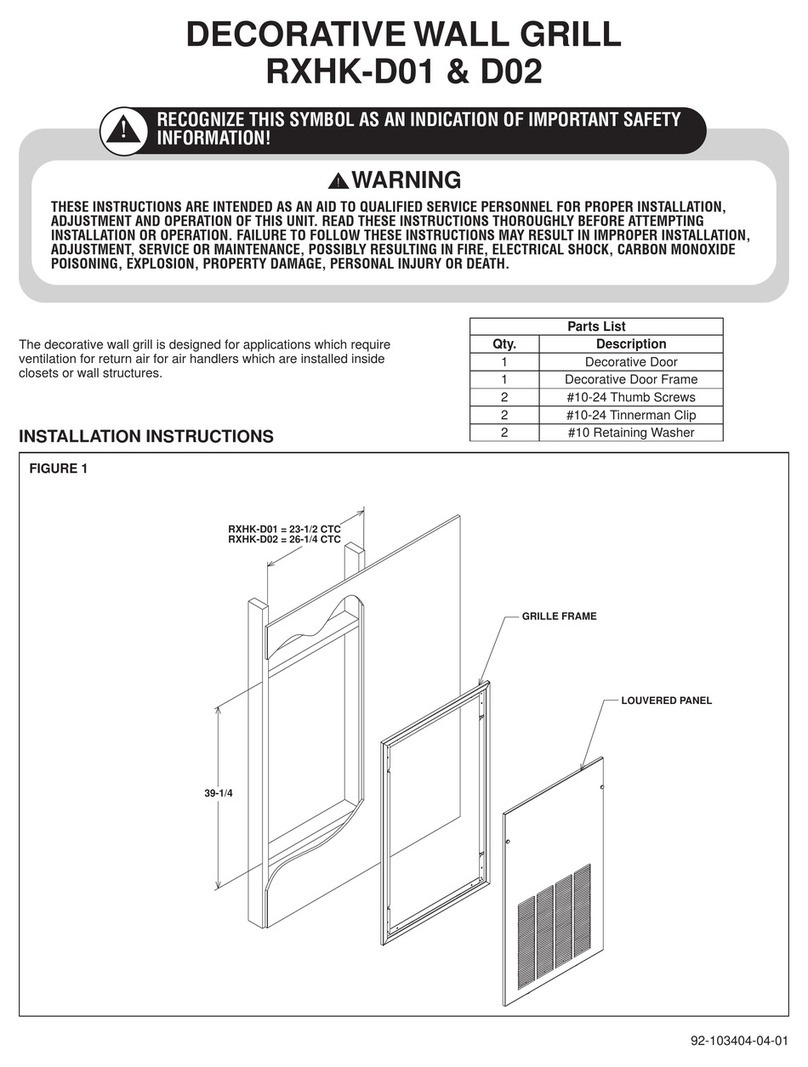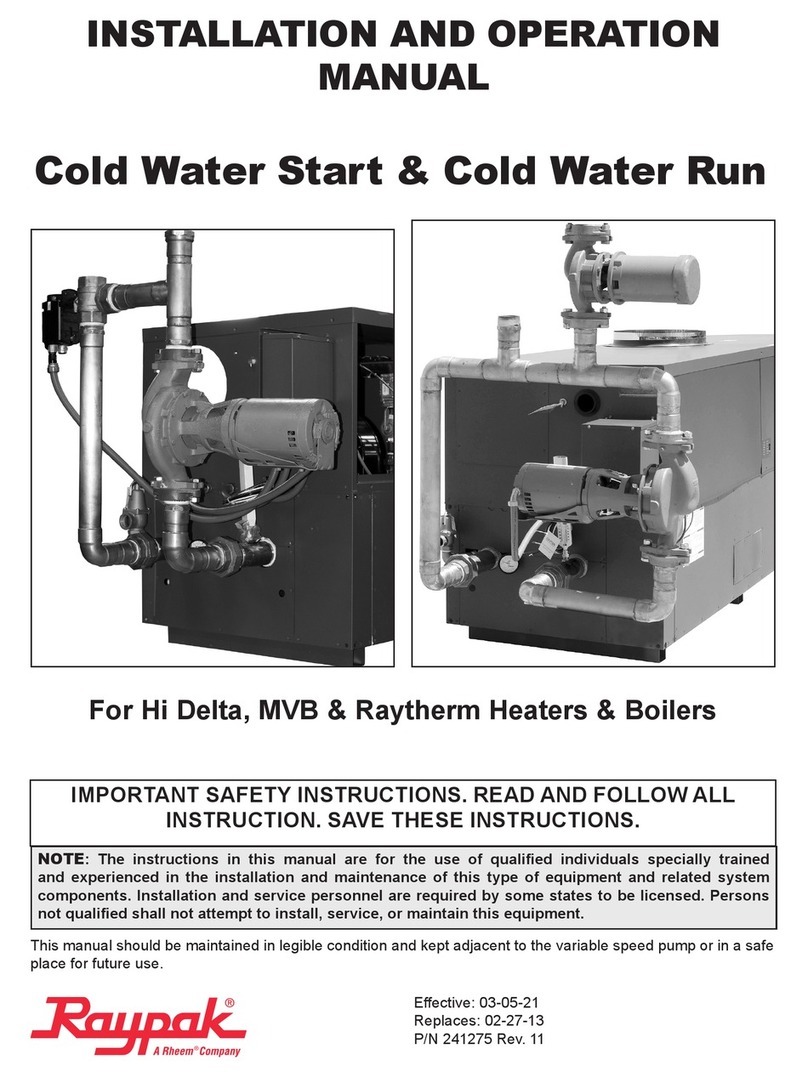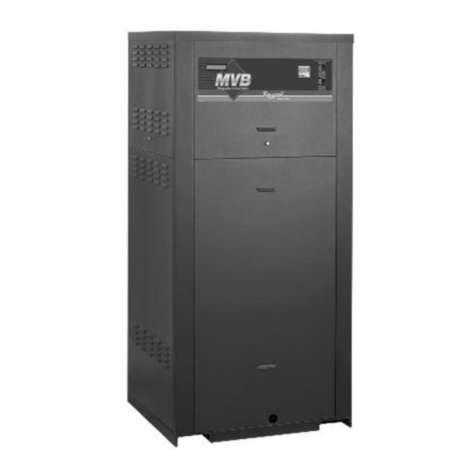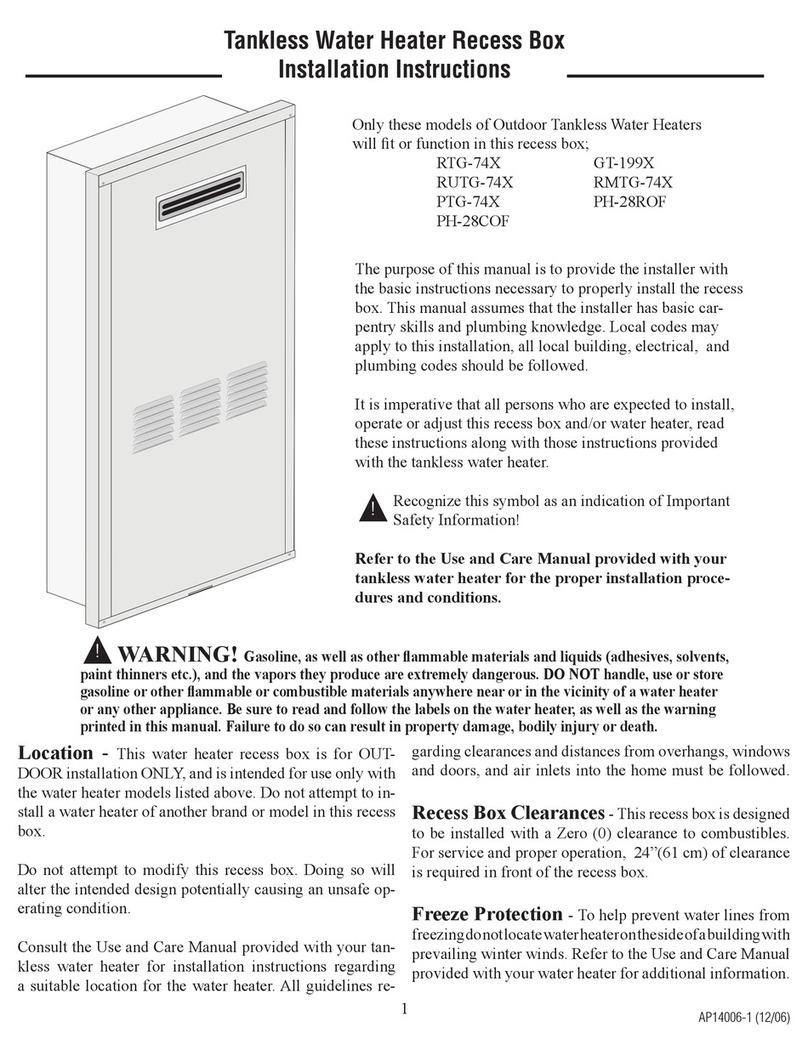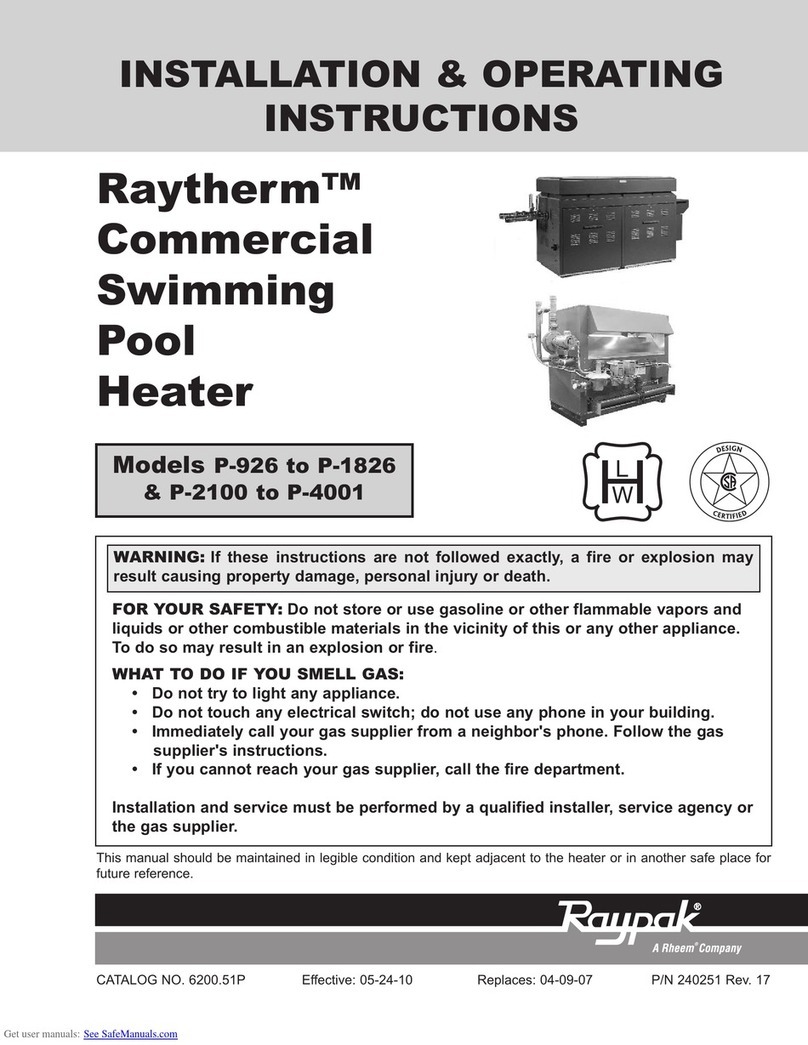
5
2. RECEIVING EQUIPMENT
On receipt of your equipment, it is suggested that you
visually check for external damage to the carton. If the
carton is damaged, it is suggested that a note be made
on the Bill of Lading when signing for equipment. Remove
the complete assembly from the carton. If it is damaged,
report the damage to the carrier immediately. Be sure
that you receive the number of packages indicated on the
Bill of Lading. Claims for shortages and damages must
be led with the carrier by consignee.
Purchased parts are subject to replacement only under
the manufacturer’s warranty. Debits for defective
replacement parts will not be accepted and defective parts
will be replaced in kind only per our standard warranties.
When ordering parts, you must specify the kit number.
When ordering under warranty conditions, you must also
specify the date of installation.
The manufacturer recommends that this manual be
reviewed thoroughly before installing the D-2 Power
Vent. If there are any questions which this manual does
not answer, please contact you local Representative.
THIS MANUAL SHOULD BE MAINTAINED IN LEGIBLE
CONDITION AND KEPT ADJACENT TO THE UNIT.
Included items:
(1) D-2 Power Vent
(1) Collar Adapter
(1) 7/8" Plastic Grommet
(1) Adj. 90° Elbow with Screen
(1) 4” Flue Adapter
COLLAR ADAPTER
4" ADAPTER D-2 POWER VENT
(WITH ADAPTER IN PLACE)
SEPARATED
TOGETHER)
ELBOW WITH SCREEN
(VENT TERMINATION)
Figure 1. D-2 Parts
3. GENERAL
SPECIFICATIONS
The D-2 Power Vent is tested and certied to the latest
edition of the American National Standard ANSI Z21.56
standard for pool heaters.
The D-2 Power Vent is a fan-assisted combustion system
designed for application to heater models 206 thru 408.
When installed as directed, the unit is capable of operating
in applications such as through-the-wall venting and
reduced horizontal and vertical Category III ue pipe sizes
in new and existing installations.
The D-2 Power Vent includes a blower with a 120/240 volt
60Hz 1.95/1.0A 3200 RPM motor and a plenum, complete
with a draft proving switch and a motor relay.
Model No. Factory
Wired
D-2 Power Vent
Part No.
206/207 - 266/267/268 240 VAC 009832
336/337 - 406/407/408 009833
206/207 - 266/267/268 120 VAC 010744
336/337 - 406/407/408 010745
Table A. D-2 Usage and Kit Numbers
Dimensions
Refer to Figure 2.
Model Dimensional Data
AB
206/207, 266/267/268 12.31" (31.3 cm) 4.31" (10.9 cm)
336/337, 406/407/408 18.31" (46.5 cm) 7.31" (18.6 cm)
Table B. Dimensions
4. INSTALLATION
REQUIREMENTS
Failure to install, maintain and/or operate the Power Vent
in accordance with manufacturer’s instructions may result
in conditions which can produce bodily injury and property
damage.
The equipment must be installed by a qualied installer
in accordance with all local codes, or, in the absence of
local codes, with the latest edition of the National Fuel Gas
Code, ANSI Z223.1/NFPA 54 and the National Electrical
Code, ANSI/NFPA 70. In Canada, installations must
conform to CAN/CSA B149.1 and to the latest Canadian
Electrical Code Part 1.
Disconnect power supply when making wiring connections
or when working around the fan blade and motor. Failure to
do so may result in severe personal injury and equipment
damage.
Make certain the power source is adequate for the fan
motor requirements. Do not add the Power Vent to a circuit
where the total load is unknown.
APPROVED
UNCONTROLLED DOCUMENT IF PRINTED


















